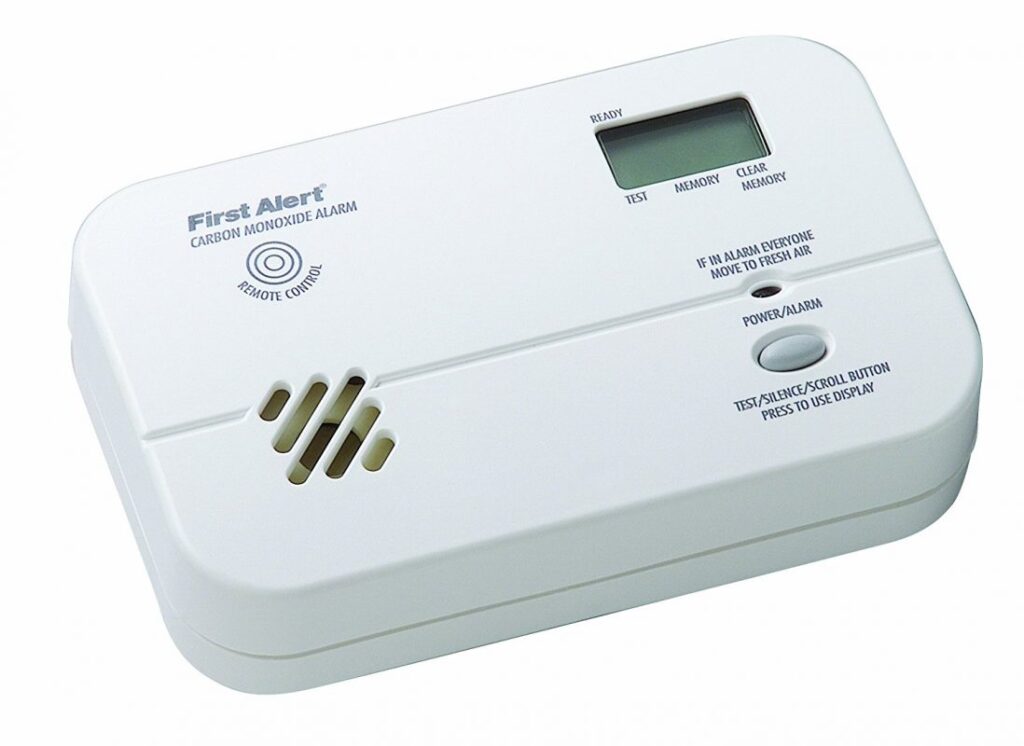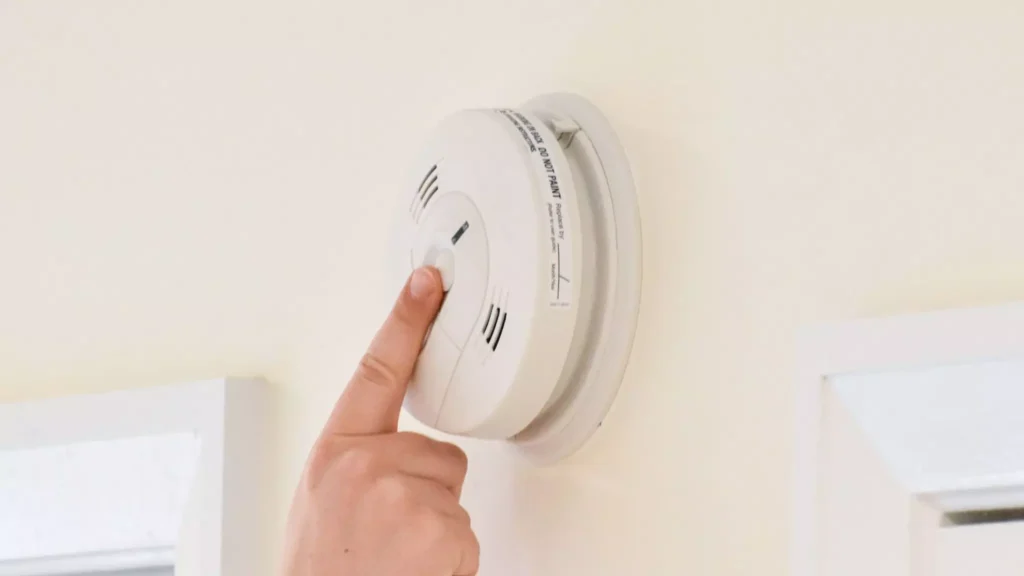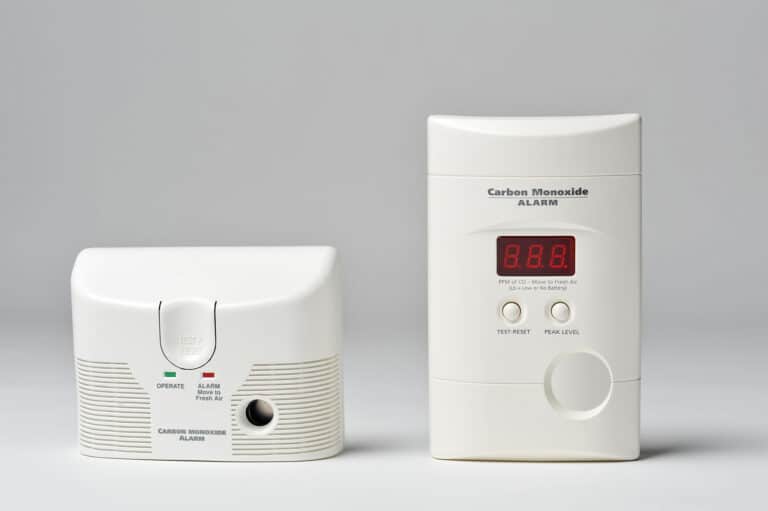Introduction
When Do You Need A Carbon Monoxide Detector: Carbon monoxide (CO) is a colorless, odorless, and tasteless gas that poses a serious threat to human health and safety. It is produced as a byproduct of incomplete combustion in various household appliances and vehicles. Because of its imperceptible nature, carbon monoxide can build up to dangerous levels indoors without any warning signs. As a result, the need for a carbon monoxide detector becomes paramount to ensure the well-being of individuals in indoor environments.
This article explores the critical importance of carbon monoxide detectors, highlighting the scenarios and locations where they are essential for safeguarding lives and preventing potentially life-threatening situations. Putting in carbon monoxide monitors in homes, businesses, and cars can help lower the risks that come with this silent but deadly gas. As carbon monoxide is hard to find and offers serious risks, you have to have a carbon monoxide detector.
These gadgets are just what you need to find carbon monoxide and let people know about it before it gets dangerous. As if they were guardians, they constantly scan the air and sound a warning at the slightest sign of high CO levels. While most people think of furnaces and other gas-powered machines as sources of carbon monoxide. The truth is that this gas can come from a lot of different places.

Do I need a carbon monoxide detector if I have no gas?
Conclusion on Installing Carbon Monoxide Detectors Even if You Don’t Have Gas Appliances. Even if your property doesn’t have any gas appliances, it’s still a good idea to have CO detectors installed. You never know if someone who is unaware will bring a gas stove or other small appliance near your home.
Carbon monoxide is made when carbon-containing fuels are burned incompletely. Gas heaters are often blamed for CO emissions, but other things can also cause it. Like oil heaters, stoves that burn wood, charcoal grills, and even cars. Carbon monoxide can be released into the air by these sources if they aren’t properly vented or if something goes wrong with them.
CO risks can come from oil heaters, wood stoves, and even electric heating systems. Carbon monoxide can build up inside if the heating system isn’t working right. If flues or pipes are blocked, or if there isn’t enough air flow. If these systems don’t work right, dangerous amounts of CO can build up, which is why detectors are so important.
Even if you don’t have gas appliances, traditional wood-burning fireplaces and stoves can emit carbon monoxide if not maintained or used properly. A blocked chimney or inadequate ventilation can trap CO indoors, leading to a potential health hazard.
If you have an attached garage and use it to park your car. If you don’t keep the vents open, carbon monoxide from the air can get into your home. This is very important when it’s cold outside, because people may run their cars inside to stay warm.
How do I know if my house needs a carbon monoxide detector?
All homes with people living in them should definitely have carbon monoxide monitors put in. To help keep people from getting carbon monoxide poisoning. It is especially important for homes with furnaces, stoves, generators, and gas water heaters to have carbon monoxide monitors put in.
If you have tools in your home that burn fuel, like gas furnaces. If you use water heaters, fires, or fireplaces, you are very likely to be exposed to carbon monoxide. CO can build up in these products if they don’t work right, leak, or don’t have enough air flow. As a general rule, any home with gas-powered appliances should have carbon monoxide detectors.
Even if you don’t have gas equipment, you can still heat your home with something like an oil furnace. Carbon monoxide can also be made by electric heaters or wood-burning fires that aren’t working right. Putting in carbon monoxide monitors is a good idea if your home heats with these methods.
Homes with attached garages can pose a CO threat, especially if you warm up your car inside during cold weather. Carbon monoxide from the car’s exhaust can easily enter your home if proper ventilation isn’t maintained.
Carbon monoxide can come out of traditional fires and wood-burning stoves if they aren’t properly vented or if the chimney is blocked. Having monitors is a good idea, even if you don’t use them very often.
Why would you need a carbon monoxide detector?
Importance of Carbon Monoxide Detectors
A carbon monoxide monitor should be put in every home with at least one fuel-burning appliance or heater, an attached garage, or a fireplace. It works to let you know that the deadly gas is inside the house.
Carbon monoxide is made when carbon-containing fuels like gas, oil, wood, and coal are burned incompletely. It comes from a lot of different places, like gas stoves and cars. The danger comes from the fact that it can’t be found with a device. It might not be noticed until exposure signs show up or become so bad that they could kill the person.
Carbon monoxide can cause health problems, even at low levels. These can range from light headaches and dizziness to more serious ones like confusion, nausea, and passing out. Exposure for a long time or at a high amount can cause permanent damage or even death. In the event of a carbon monoxide alarm going off, you can quickly take action to avoid health risks.
Carbon monoxide leaks are especially scary at night, when people are sleeping and less likely to notice signs. If the CO level rises, a working monitor can wake you up with an alarm. Giving you valuable time to get out of there and breathe fresh air.
As opposed to what most people think, you don’t need gas equipment to be in danger. Fuel-burning stoves, fires, cars, and oil heaters can all give off carbon monoxide. You need monitors in your home no matter what tools you have.
What requires a carbon monoxide detector?
Carbon monoxide alarms must be installed in any room containing any fixed combustion appliance, except gas cookers.
There must be carbon monoxide monitors in stoves and fireplaces. CO can build up in these products if they don’t work right, leak, or don’t have enough air flow. Which devices can quickly find and let people know about.
Carbon monoxide can also be made in homes with heating systems that use oil, wood, or coal, if they are not properly kept. CO levels inside can get too high if something isn’t working right or there isn’t enough air flow. To keep an eye on these systems and make sure they are safe, you need a carbon monoxide alarm.
Homes with attached garages are susceptible to carbon monoxide exposure, especially if vehicles are left running inside. Carbon monoxide from vehicle exhaust can seep into living spaces, posing a significant risk to occupants. Detectors can provide an early warning in such scenarios.
Traditional fires and stoves that burn wood can give off carbon monoxide if they don’t have enough air flow or if their chimneys are blocked. Having carbon monoxide monitors in these places is very important, whether they are used often or not.
Commercial buildings like offices, restaurants, and stores can also be possible sources of carbon monoxide. There is a chance of CO from heating systems, industrial equipment, and generators. Putting in detectors makes sure that both workers and customers are safe.
Can all electric house have carbon monoxide?
Even those living in all-electric homes should install carbon monoxide detectors because CO can seep into the house from an attached garage or if a backup generator is used too close to your living quarters during a power outage.
In an all-electric house, the most direct sources of carbon monoxide. Such as gas stoves, furnaces, and water heaters, are absent. This absence can create a false sense of security regarding CO risks.
Garages that are connected to all-electric homes pose a major safety risk. Fuel-powered cars can leak pollution fumes into the living area if the garage is connected to the house and those cars are parked inside. To stop carbon monoxide from getting in, you need to make sure there is enough ventilation or airtight walls.
Although the primary energy sources within the house are electric, some homeowners may use gas-powered generators during power outages. Too close to the house or inside, these engines can give off dangerous amounts of carbon monoxide.
CO could only get into a home that is powered by electricity from the ground up. If there are gas stoves or generators in close homes. CO can get into your home through shared vents, pipes, or airspaces, which is bad for the quality of the air inside.
Ventilation systems, including exhaust fans and dryer vents, can potentially become pathways for carbon monoxide to infiltrate the home. If these systems are poorly designed, damaged, or blocked, they might inadvertently introduce CO into the living space.
What causes carbon monoxide in a house?
CO can get inside your home in a number of ways. Carbon monoxide usually builds up because appliances like stoves and hot water heaters aren’t installed correctly, aren’t kept properly, or don’t have enough air flow. Fireplaces and other gas or wood-burning machines that don’t have enough air flow can also be dangerous.
The most well-known places in a home where carbon monoxide can come from are machines that use gas. Furnaces, water heaters, stoves, ovens, and even gas-powered dryers can make CO when fuel is burned partially because of bad air or broken equipment.
Carbon monoxide can come out of traditional fireplaces and wood-burning stoves if the pipes are blocked or there isn’t enough air flow. CO can get into the air inside if these warmth sources don’t burn properly.
When used in small areas or ones that don’t have enough air flow, portable generators and other outdoor tools like lawnmowers and power tools can give off carbon monoxide. It is very dangerous to use this kind of tools inside or in garages.
Attached garages can be a hidden source of carbon monoxide, especially if vehicles with internal combustion engines are left running inside. The exhaust fumes can seep into the house through shared walls or airspaces.
When used as extra heat, gas-powered space heaters can give off carbon monoxide if they aren’t taken care of properly or if the room doesn’t have enough air flow.
What are two warning signs of carbon monoxide poisoning?
What are the signs of being poisoned by CO? Headaches, dizziness, weakness, nausea, vomiting, chest pain, and confusion are some of the most common signs of CO overdose.CO symptoms are often described as “flu-like.” If you breathe in a lot of CO it can make you pass out or kill you.
One of the most common warning signs of carbon monoxide poisoning is the onset of flu-like symptoms in individuals who have been exposed to the gas. These symptoms can include headache, dizziness, nausea, vomiting, and general feelings of weakness or fatigue. These flu-like symptoms can easily be mistaken for common illnesses, leading to delayed recognition of carbon monoxide poisoning.
Carbon monoxide interferes with the body’s ability to transport oxygen to vital organs and tissues. The symptoms mirror those of the flu because both conditions involve oxygen deprivation at the cellular level. However, unlike the flu, carbon monoxide poisoning does not cause a fever.
If your symptoms get better after leaving the place where you are being exposed to carbon monoxide, that is another important warning sign. For example, people who feel sick at home but feel better when they go outside or to a different place should be warned that they may have been exposed to carbon monoxide.
In fresh air, carbon monoxide spreads out pretty fast. When people leave the source of exposure, their bodies start getting enough air again, which makes their symptoms slowly get better. When this happens, known as the “fresh air effect,” can provide a strong indication that carbon monoxide might be present in the initial environment.
What are the three types of carbon monoxide detectors?
There are three types of carbon monoxide sensors: metal oxide, biomimetic and electrochemical.
One type of carbon monoxide monitor that is used a lot is an electrochemical sensor detector. A carbon monoxide monitor uses an electrochemical cell to find out how much CO is in the air. When CO molecules touch the cell, they start a chemical process that makes an electric current. The amount of carbon monoxide present is then found by measuring this current and turning it into a computer reading.
Metal oxide semiconductor detectors have a unique sensor made up of a silicon chip that has a thin layer of tin dioxide on it. When the film is subjected to carbon monoxide, its resistance changes, which causes the electrical current to change. This change is detected by the sensor and triggers an alarm.
Biomimetic sensor detectors use a substance that is like gel and changes color when it comes in touch with carbon monoxide. These monitors work like hemoglobin in the body, which changes color when it comes in contact with CO. An alarm goes off when the color changes to let people know what’s going on.
CO detectors come in three main types: electrochemical sensor detectors, metal oxide semiconductor detectors, and biomimetic sensor detectors. All of them are very important for finding carbon dioxide and letting people know about it. You should choose based on how exact, sensitive, expensive, and good for your environment it is.

Conclusion
People keep these modest devices in their homes, businesses, and even their cars to protect themselves from the potentially deadly danger of carbon monoxide. Their ability to monitor and swiftly detect even trace amounts of this toxic gas provides an invaluable layer of protection for our well-being. Their alarms serve as a wake-up call, giving occupants the precious time needed to evacuate and mitigate the hazard before it escalates.
Ultimately, the key to effective carbon monoxide safety lies in understanding when these detectors are needed most. There is a chance of being exposed to carbon monoxide when you heat your home, cook inside, use fuel-powered tools, or just look for warmth in a fireplace. You are actively protecting yourself and those around you by putting devices in these important places and keeping them in good shape.
In a world where invisible threats can pose the gravest dangers, carbon monoxide detectors provide a tangible means of protection. They empower us to stay one step ahead of an otherwise imperceptible menace, giving us the peace of mind that comes with knowing we’ve taken vital steps to secure our environment. As technology advances and awareness spreads, let us not underestimate the life-saving potential of these unassuming devices. In embracing their role, we pave the way for a safer, healthier, and more secure future.

